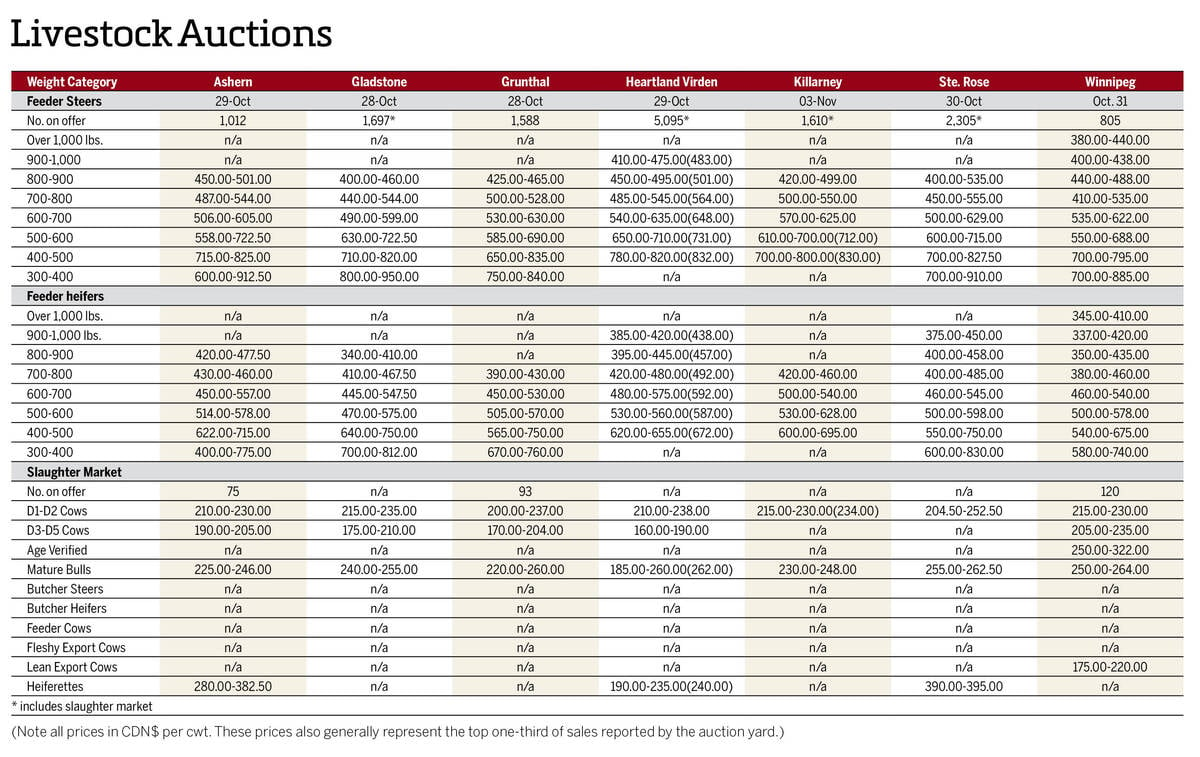Wheat is grown around the world, but different varieties are suited for different uses. The hard red spring wheat of Western Canada is prized by bread makers and the softer lower-protein wheats grown to the east are better suited to cakes and pastries.
The global flow of wheat, or lack thereof, is always a key market-moving factor to keep on the radar.
U.S. wheat exports
Read Also

Manitoba cattle prices, Nov. 4
Manitoba cattle sale prices for the week of Oct. 28 to Nov. 4, 2025.
The United States is halfway through its marketing year for wheat, which began June 1. While recent business to China has picked up, net sales are running at their slowest pace in 50 years. Lack of export demand contributed to all three U.S. wheat markets hitting contract lows in late November before uncovering support and bouncing up.
Prices may have finally sunk low enough to uncover more export demand, but time will tell whether bargain hunting is enough to underpin a longer-term uptrend.
U.S. wheat exports to China, of 379,000 tonnes to date, are down from 616,200 tonnes at the same time a year ago, but one bright sign is that there are an additional 639,000 tonnes of commitments still to move compared to zero last year.
China is primarily in the market for soft red winter wheat, the variety represented by the Chicago futures.
While overall U.S. wheat business is down, total soft red winter wheat commitments are at their largest in nine years. As a result, the higher-protein Kansas City hard red winter wheat and Minneapolis hard red spring wheat contracts have lost some of their premium to the Chicago futures.
Over the past two months, Chicago soft wheat has gained nearly $1 relative to Kansas City hard red winter wheat and about 60 cents on Minneapolis spring wheat.
Canadian wheat sales
Western Canada primarily grows and exports hard red spring wheat, which means the relative softness in the U.S. spring wheat futures has taken a toll on domestic cash prices. Unlike the U.S., Canadian wheat sales are looking solid so far.
Canada has exported 6.9 million tonnes of wheat through 17 weeks of the Canadian crop year that began Aug. 1, according to Canadian Grain Commission data. That’s up by about 500,000 tonnes from the same time in 2022-23. The 603,300 tonnes moved during the week ended Nov. 26 was the largest weekly total in more than a year.
Agriculture and Agri-Food Canada projects a 2.6 million tonne cut in non-durum wheat exports this marketing year, which, if realized, would mean a slowdown in the current pace. Production was down on the year, so smaller exports are to be expected, but prices may need to rise to ration the movement.
















